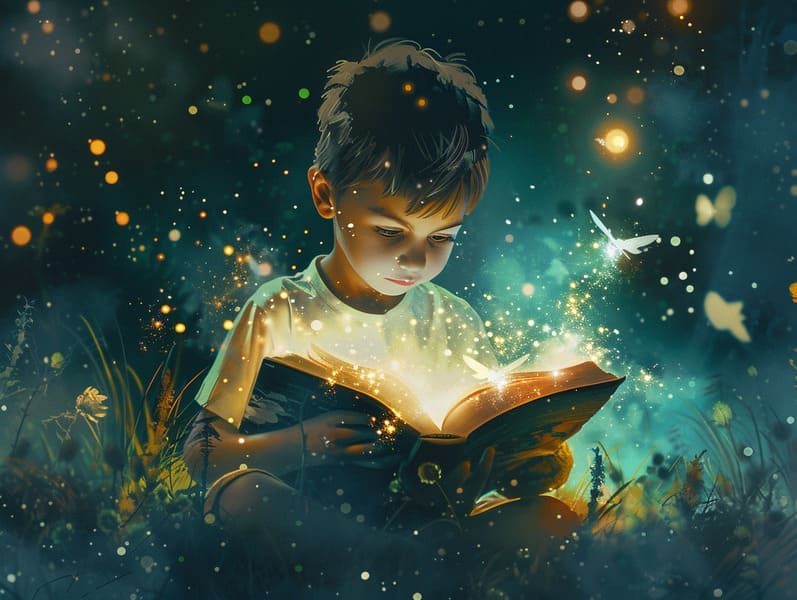The Story Behind Online Fairy Tales with the Unchanging Grandeur.
The Story Behind Online Fairy Tales with the Unchanging Grandeur.
Blog Article

Historical fairy tales have old origins. These narratives have been conveyed from one generation to the next far before they were ever transcribed. They arose from a variety of societies, including Indigenous traditions. They were initially told among grown-ups, often carrying themes and messages concerning the societal norms and beliefs of the time.
Jacob and Wilhelm Grimm, Jacob and Wilhelm (the Grimm brothers), were among the first to compile many of these beloved tales. Their compilation, "Grimm's Folk Tales," included tales like "The Story of Cinderella," "The Story of Hansel and Gretel," and "Schneewittchen," which have since become cornerstones in the world of famous fairy tales. Similarly, Hans Andersen's whimsical tales, such as "The Mermaid's Tale," and "The Little Duckling," have stolen hearts worldwide, solidifying their place in the pantheon of iconic fairy tales.
Though they are centuries old, fairy tales remain as pertinent as ever, especially as kids' bedtime tales. These fantastical tales are now available in many formats, including artistically illustrated books, fantastical animations, and digital storybooks.
Their enduring popularity can be credited to several magical reasons:
Crucial Morals: Ancient fairy tales often present important moral lessons. Stories like "The Boy Who Cried Wolf" teach the value of sincerity, while "The Hare and the Tortoise" exemplify the traits of tenacity and humility. These stories offer kids clear distinctions between good and bad, forming their moral compass in a kind yet meaningful way.
Warmth and Understanding: Old fairy tales frequently feature heroes facing tests and troubles, inciting audiences to identify with their struggles and support their triumphs. For instance, "Beauty and the Beast" conveys the value of valuing inner qualities to acknowledge the true nature of a character, cultivating sympathy and understanding.
Cultural Awareness: Many classic fairy tales are rich in the cultural contexts from which they developed. Exploring these stories can provide intriguing perspectives into different cultures, advancing a sense of global insight and awareness.
Fantasy and Imagination: The extraordinary elements in ancient fairy tales—magical spells—awaken children’s fantasies. These fairy tales take readers to imaginary realms, boosting fantasy dreams and a sense of wonder that remains a lifetime.
Ancient fairy tales are not only enchanting but also instructive. They function as whimsical tools in fostering various cognitive and emotional skills in young ones. When fairy tales are spoken out loud, they nurture communication skills by teaching new terms and meanings and sophisticated sentence structures. This practice also enhances hearing abilities and focus, as little ones follow the story, looking forward to see what happens next.
Furthermore, conversing about the themes and characters of ancient fairy tales can promote analytical skills and cognitive skills. Young readers here are instructed to identify patterns, expect results, and figure out cause and effect. These talks also ease young ones verbalize their thoughts and feelings, adding to their emotional intelligence.
In today’s information age, the prevalence of web-based fairy tales has made these fairy tales more attainable than ever. Internet resources and software present comprehensive collections of old fairy tales that can be explored or heard anytime, anywhere. Fairy tales narrated are particularly popular, featuring an entertaining method for young readers to take part in these mesmerizing stories. Read-aloud books and read-to-me videos lead characters and settings to life, often paired with entrancing background sounds and background music that intensify the storytelling experience.
The timeless charm of timeless fairy tales lies in their ability to alter to new eras while holding onto their core values. Contemporary updates of these tales often include more inclusive figures and modern settings, making them familiar to today’s audience. However, the underlying themes of fortitude, benevolence, and equity remain unchanged, continuing to touch kids of all ages.
Timeless fairy tales also offer a sense of comfort and knownness. They allow a ordered narrative with a definite beginning, middle, and end, often drawing to a close with the resolution of conflicts and the triumph of virtue over corruption. This certainty can be calming for young readers, granting a sense of steadfastness in an constantly changing world.
Traditional fairy tales continue to allure and enlighten new generations, maintaining their spell and meaningfulness in modern society. As nighttime stories for kids, they extend a perfect blend of allure and teaching, aiding moral values, empathy, and creativity. The presence of digital fairy tales and the well-liked nature of fairy tales recited assure that these ancient stories remain within reach to new generations.
By keeping and circulating these stories, we continue to recognize the rich tapestry of tales and cultural heritage. Whether you are browsing a vividly illustrated book, viewing a web collection, or listening via an audiobook, the charm of Grimm's fairy tales is always within reach. These fairy tales point out of the ageless spell of tales and its ability to gather us across eras and regions.
Regardless if you are viewing a colorful picture book, seeing a electronic library, or hearing an sound book, the fascination of children's fairy tales is always within reach.
These tales illustrate of the unchanging nature of fairy tales and its ability to tie us across time and space, creating a bond that delights and instructs alike.